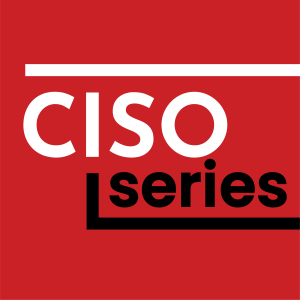
I'll See Your Gated Whitepaper and Raise You One Fake Email Address
 2019-10-22
2019-10-22
All links and images for this episode can be found on CISO Series (https://cisoseries.com/ill-see-your-gated-whitepaper-and-raise-you-one-fake-email-address/)
We're all in with not wanting "follow up email marketing" on the latest episode of CISO/Security Vendor Relationship Podcast.
This episode is hosted by me, David Spark (@dspark), producer of CISO Series and founder of Spark Media Solutions and Mike Johnson. Our guest this week is Ian Amit (@iiamit), CSO, Cimpress.
Thanks to this week's podcast sponsor Trend Micro.
Trend Micro Incorporated, a global leader in cybersecurity solutions, helps to make the world safe for exchanging digital information. Our innovative solutions for consumers, businesses, and governments provide layered security for data centers, cloud environments, networks, and endpoints. For more information, visit www.trendmicro.com.
On this week's episode
Why is everyone talking about this now?
To gate or not to gate. Mike posted on LinkedIn about how much he appreciated vendors who don't gate their content behind a registration wall. The post blew up on LinkedIn. The overwhelming response got some vendors willing to change their tune.
Hey, you're a CISO, what's your take on this?
Kevin Kieda of RSA Security asks, "For an initial meeting what are the things you want the sales person to know about your business that many of them don't." Kevin says he gets frustrated that he gets the sense a prospect wants them to know what tools they're using even though he knows he often can't find out that information. What is the must know, nice to know, and boy I'm impressed you know that?
Mike Johnson recommends BuiltWith.com for basic OSINT on a company site.
What's Worse?!
Whose mistakes are worse? Your own or the vendor's?
The great CISO challenge
Factor Analysis of Information Risk (FAIR) is a risk framework (often laid ontop of others) that simplifies the understanding of risk by identifying the blocks that contribute to risk and their relationship to each other and then quantifying that in terms of money. Ian, can you give me an example of how you actually do this?
Since its inception back in 2010, Zero Trust Architecture has been gaining traction. Much of the interest stems from the nature of work and data today – people working from anywhere on any device, and data racing around networks and to and from the cloud means there is no single fortress where everything can exist safely. Operating on a belief that everything inside the perimeter is safe because it’s inside the perimeter is no match to today’s hacking, penetration and inside sabotage.
The establishment of new perimeter protections, including microtunnels and MFA is best applied to new cloud deployments but must still somehow be factored into a legacy architecture without becoming more inconvenient and vulnerable than what it is trying to replace.
More on CISO Series.
Check out lots more cloud security tips sponsored by OpenVPN, provider of next-gen secure and scalable communication software. OpenVPN Access Server keeps your company’s data safe with end-to-end encryption, secure remote access, and extension for your centralized UTM.
Why is this a bad pitch?
What's the polite way to hande the way too generic vendor request. We offer two examples of non-specific pitches that are obviously just begging for a CISO's time.
Is there a polite way to refute the request and let them know without talking down to them and letting them know that this isn't a tactic they should pursue?
More Episodes
 2023-01-24
2023-01-24
 2022-12-06
2022-12-06
 2022-11-15
2022-11-15
 2022-11-01
2022-11-01
Create your
podcast in
minutes
- Full-featured podcast site
- Unlimited storage and bandwidth
- Comprehensive podcast stats
- Distribute to Apple Podcasts, Spotify, and more
- Make money with your podcast
It is Free
- Privacy Policy
- Cookie Policy
- Terms of Use
- Consent Preferences
- Copyright © 2015-2024 Podbean.com




